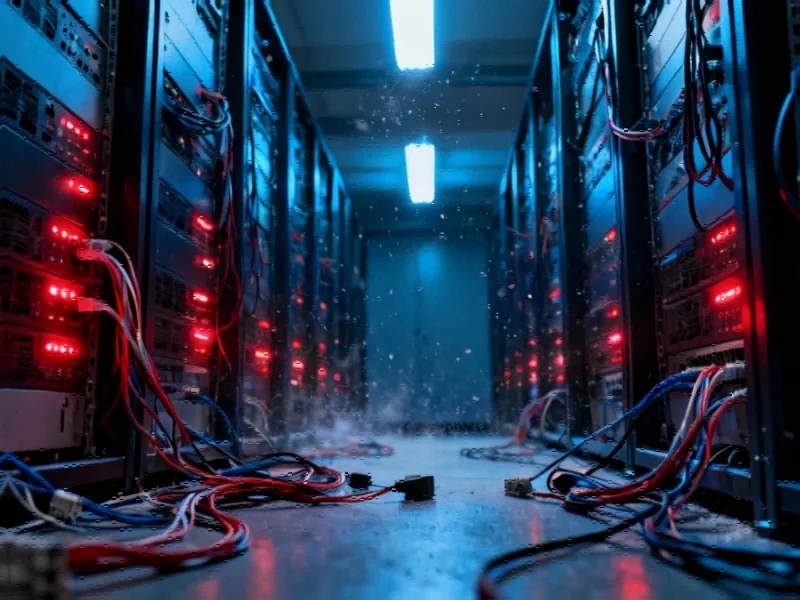The Domino Effect of AWS’s Latest Outage
In the early hours of October 20, 2025, Amazon Web Services (AWS), the cloud computing behemoth, experienced a significant outage that sent shockwaves across the digital landscape. This incident underscores the fragile nature of our interconnected online world, where a single point of failure can disrupt services globally. As users from North America to Europe woke up to error messages, it became clear that AWS’s operational hiccup had evolved into a full-blown internet crisis, affecting everything from social media platforms to financial services.
What Happened and When?
The outage began around 4:00 AM ET, with AWS’s own Health Dashboard becoming inaccessible—a ironic twist that left many in the dark about the root cause. Reports flooded Downdetector, peaking at over 5,700 incidents, though this number is likely an undercount due to the early hour. Services like Perplexity and Asana quickly confirmed the issue was tied to AWS, with status pages indicating investigations into errors originating from AWS’s Virginia data centers. The lack of immediate communication from Amazon amplified user frustration, highlighting the critical need for transparent incident response in cloud infrastructure.
Impact on Major Platforms and Services
The ripple effect was immediate and widespread. Snapchat users found themselves unable to send snaps, Fortnite gamers were kicked out of sessions, and apps like Duolingo and Coinbase became unresponsive. Even McDonald’s and Venmo experienced disruptions, demonstrating how deeply AWS is embedded in daily life. This event mirrors historical AWS outages that have previously paralyzed sectors, emphasizing the risks of centralized cloud dependence. As one CEO noted on social media, the reliance on a single provider can turn a minor glitch into a global standstill.
Broader Implications for Cloud Reliability
This outage raises urgent questions about cloud redundancy and business continuity planning. Companies that depend solely on AWS without multi-cloud strategies found themselves vulnerable, whereas those with hybrid setups may have mitigated some impacts. The incident also ties into broader discussions on cloud resilience, as industries from e-commerce to entertainment grapple with the trade-offs between convenience and risk. Experts warn that as digital transformation accelerates, such events could become more costly, pushing organizations to rethink their infrastructure investments.
Industry Responses and Future Outlook
In response, tech leaders are doubling down on reliability initiatives. For instance, Microsoft’s renewed commitment to hardware reflects a trend toward diversifying tech ecosystems to avoid single points of failure. Similarly, innovations in data management, such as the advancements in Linux NTFS solutions, offer alternatives for enterprises seeking flexibility. Meanwhile, corporate moves like Kering’s divestiture to L’Oréal show how businesses are streamlining operations to focus on core competencies, including IT stability. On a policy level, initiatives such as the Sterling 2.0 program in the UK aim to bolster digital infrastructure, ensuring that future market trends prioritize robustness over rapid expansion alone.
Lessons Learned and Moving Forward
For businesses and consumers alike, this outage serves as a stark reminder of the internet’s centralized underpinnings. To build a more resilient digital future, companies should consider:
- Implementing multi-cloud or hybrid cloud strategies to distribute risk
- Enhancing real-time monitoring and automated failover systems
- Investing in employee training for incident management
As the dust settles, the focus shifts to how AWS and its clients will adapt. While cloud computing offers unparalleled scalability, this event proves that diversity in related innovations is not just an option—it’s a necessity for sustaining the modern internet.
This article aggregates information from publicly available sources. All trademarks and copyrights belong to their respective owners.
Note: Featured image is for illustrative purposes only and does not represent any specific product, service, or entity mentioned in this article.



